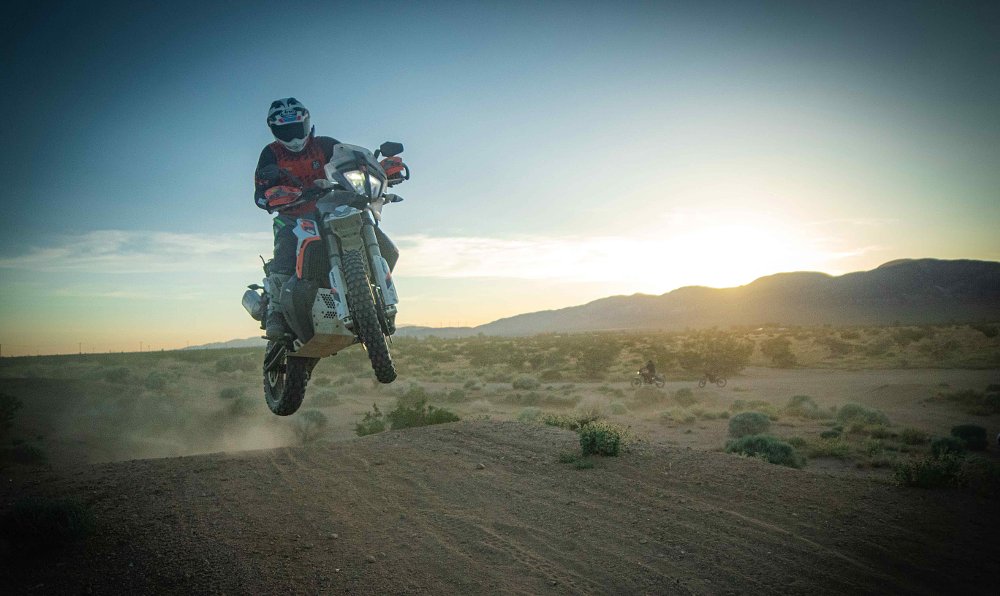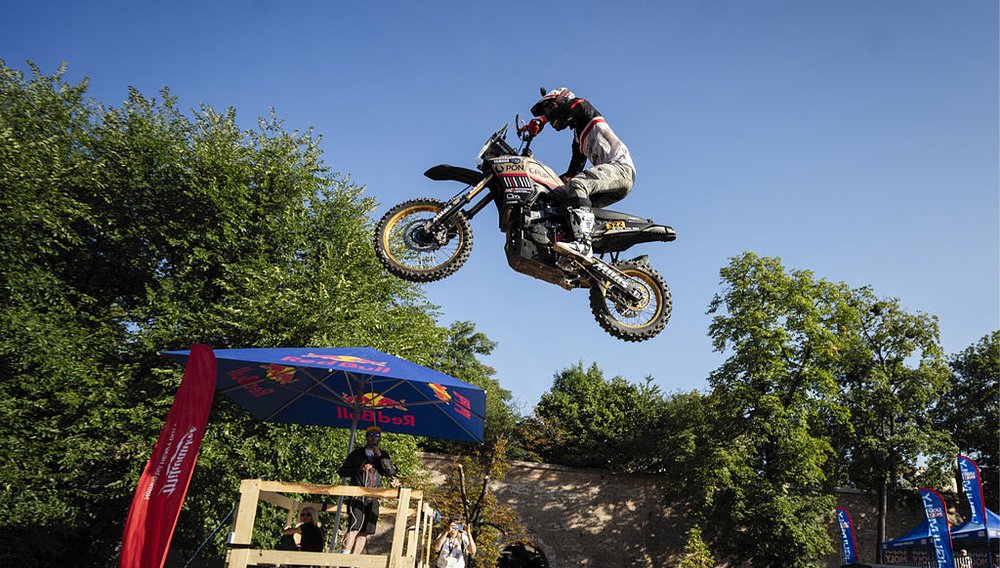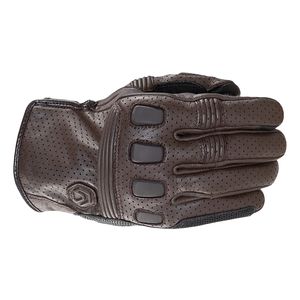I can't help thinking it: This Aprilia Tuareg 660 is wasted on me.
The Tuareg is one of the attractive options in the currently hot middleweight adventure-touring segment, which ranges from basic but competent rides like the Yamaha Ténéré 700 up to racier and more expensive KTMs. Professional racers have taken these big bikes into competition, going places you'd never think they could go. But I'm no pro. I'm not even a competent amateur, like Spurgeon. I'm a street rider who occasionally plonks down a dirt road and can't possibly exploit the Tuareg's full off-road capabilities. That's why I say it's wasted on me. But it also means I have a different perspective on the Tuareg.
These "one tank of gas" articles — and in this case, I put far more than one tank through the Tuareg, doing 1,040 miles of varied riding in all — are intended to be second opinions on motorcycles we've tested before, particularly from a different perspective. For a more complete assessment, see Common Tread contributor Abhi Eswarappa's take after thrashing the Tuareg on- and off-road in Sardinia when it was introduced two years ago. And then there's Zack Courts' Daily Rider episode, testing the Tuareg's abilities at the daily commute. I decided to look at the Tuareg from a third perspective: through the eyes of a sport-touring rider.
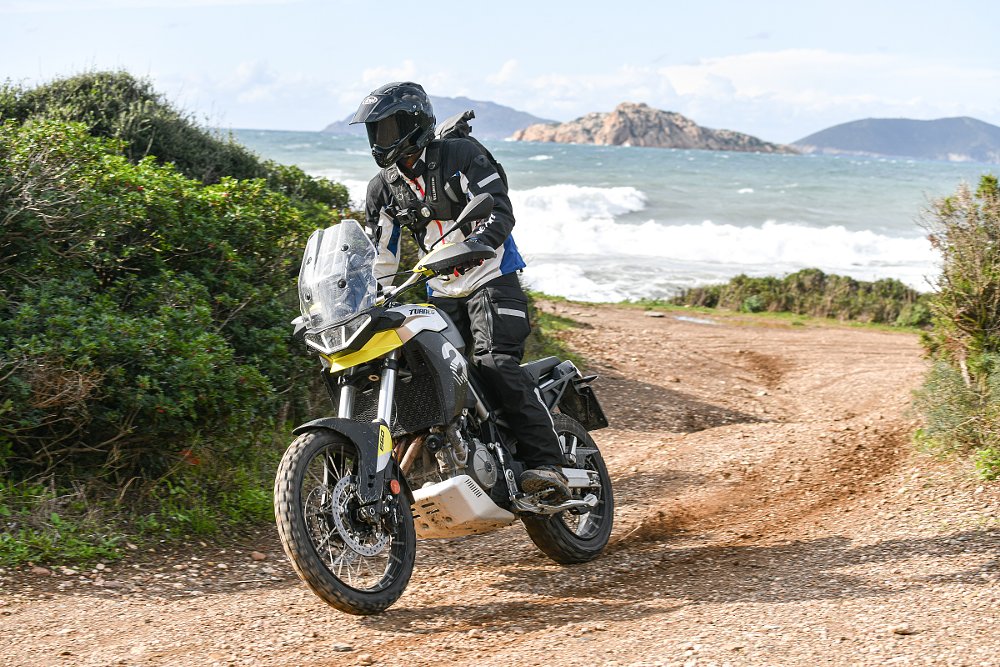
When I joined Zack and Spurgeon on the Highside/Lowside podcast to discuss the evolution of sport-touring motorcycles in an episode titled "Sport-Tourers: Are they dead or have they just evolved?", I pointed out that there are more traditional sport-touring models on the market than we tend to think. And that's because most of them haven't been updated much and all the attention has gone to the adventure-touring motorcycles, like this Tuareg, and adjacent, street-focused models that have some ADV style to them, like most Ducati Multistradas or the Kawasaki Versys 1000. When the topic comes up, lots of readers tell us how they've moved to adventure bikes for travel and other riding that used to be the realm of sport-touring. They like the upright riding position and the ample suspension travel, even if they stick mostly — or entirely — to pavement.
So, my question: Could a typical sport-touring rider like me be happy with something like a Tuareg? Would a week or two with this middleweight adventure-touring bike lure me away from the prototypical sport-touring motorcycle in my personal garage, my 2014 Honda VFR800 Interceptor Deluxe? As Zack would say on Daily Rider as he's about to smash the camera lens with his palm, "Only one way to find out. Let's ride!"
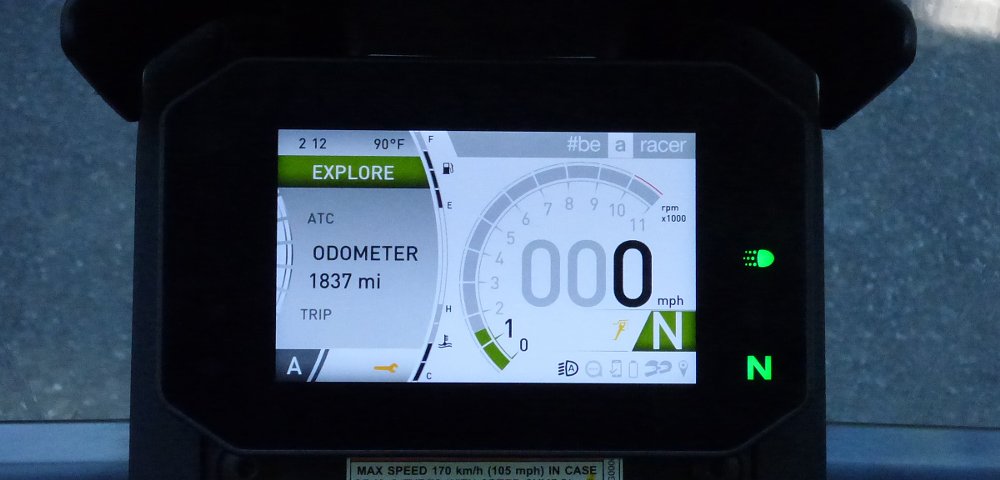
Riding the Tuareg in what feels like the desert
Go back and read Abhi's complete first test if you want all the details, but just to set the scene, a reminder that the Tuareg uses the same 659 cc parallel-twin engine found in the Aprilia RS660 sport bike and the Tuono 660 naked bike, but tuned to produce 80 peak horsepower instead of 100 while providing a much broader spread of torque in the midrange. You also get fully adjustable suspension with almost 9.5 inches of travel at both ends, two street and one off-road ride modes and one fully customizable individual ride mode, plus nice touches such as cruise control and spoked wheels that allow tubeless tires. It weighed 456 pounds on the RevZilla West scales.
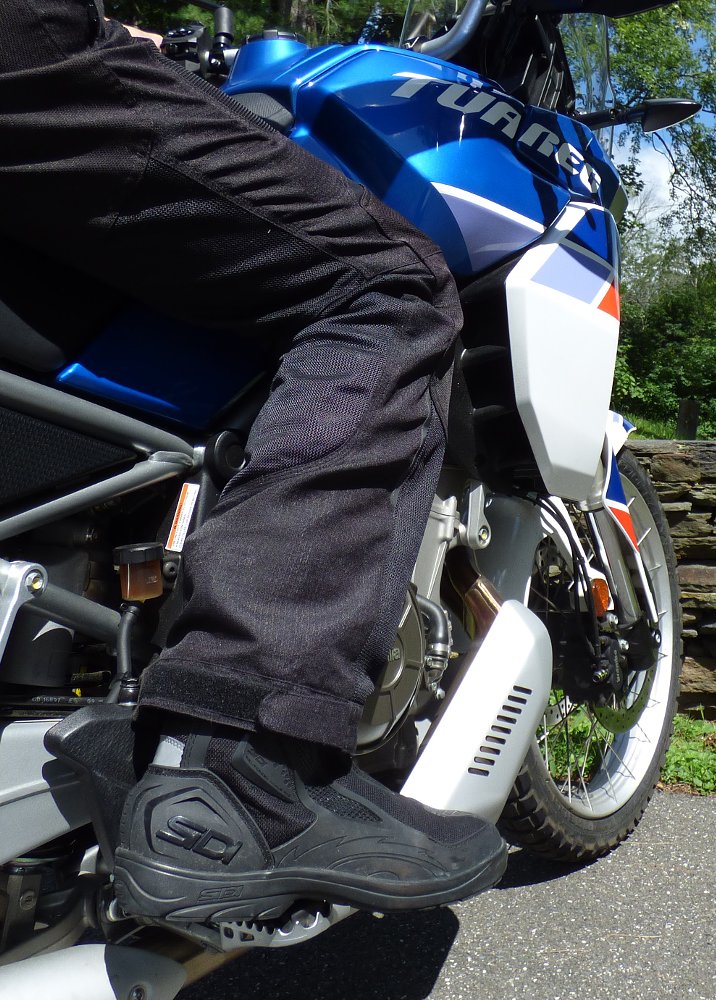
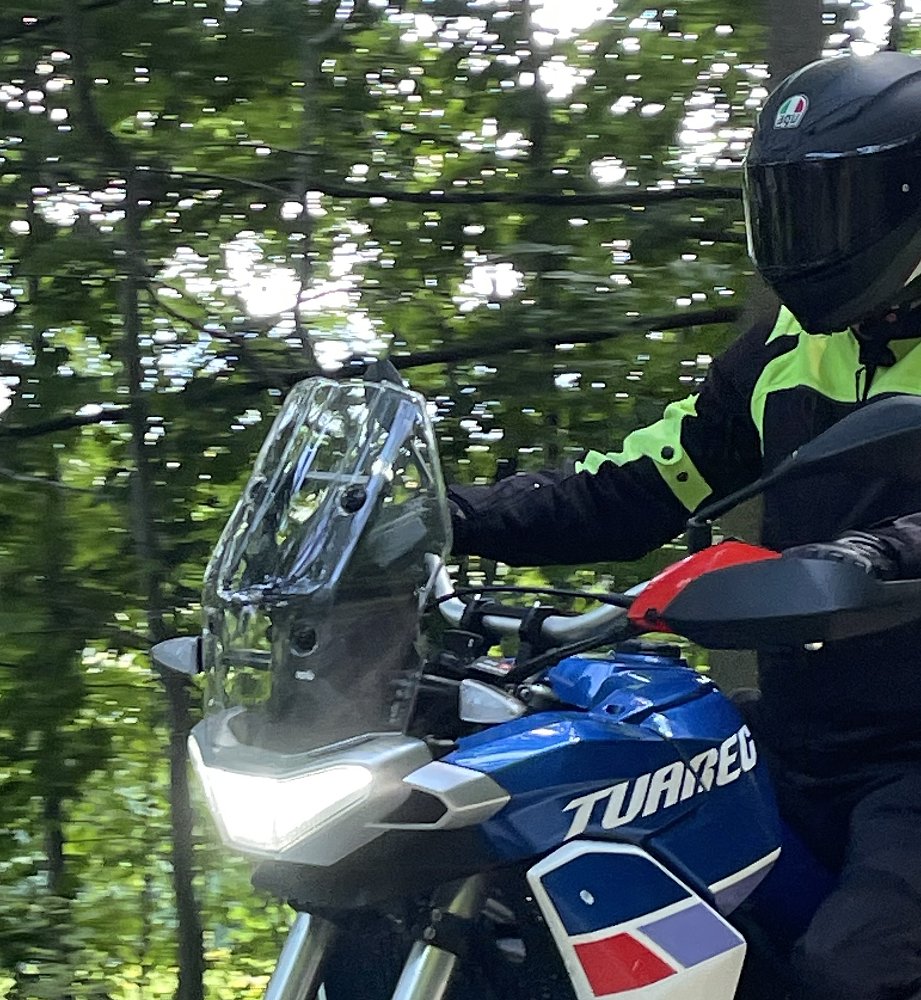
My other comfort concern was that dirt-bike-styled seat. I found out it's a lot more comfortable than it looks, but after a couple hundred miles, it's still a dirt-bike-styled seat and my posterior was quite tired of it. Then I remembered watching Spurgeon ride for miles on the interstate while standing up on his KTM 890 Adventure R Rally as we were going back to Philadelphia from a ride in West Virginia last year and how he told me at every stop what a great thing that was. So, when I reached the northern stretches of the Taconic State Parkway in New York, where the traffic thins out even on a Friday afternoon and the curves come gently, I tried it and damned if he wasn't right. A mile riding while standing up, letting the 90-degree air flow through my mesh jacket and giving my butt a break, followed by a couple of miles seated, was a great routine, and it felt totally natural on the Tuareg. That's something I couldn't do comfortably on any sport-touring bike I ever rode.
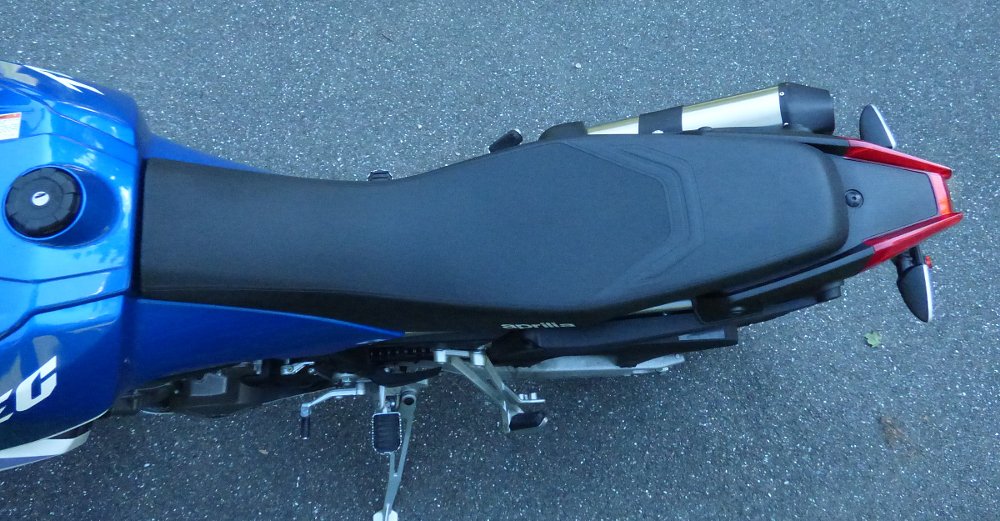
If heat management, wind management, and butt comfort management were initial minuses on the Tuareg's touring report card, there were also several positive marks. For one, the cruise control. Honestly, I haven't even tested that many motorcycles with cruise control, but the Tuareg's is at least as good as any other I've tried. One switch on the left control pod operates the cruise. Flip it left to turn it on, again to set the speed, and a press forward or back raises or lowers the set speed. Intuitively, one click predictably adds or subtracts one mile per hour of speed. Cruise control is a hot topic among Common Tread readers, with some insisting it's essential now that we're nearly a quarter of the way into the 21st century, while others shrug. Fortunately for the cruise fans, the Tuareg's cruise control works simply and it simply works.
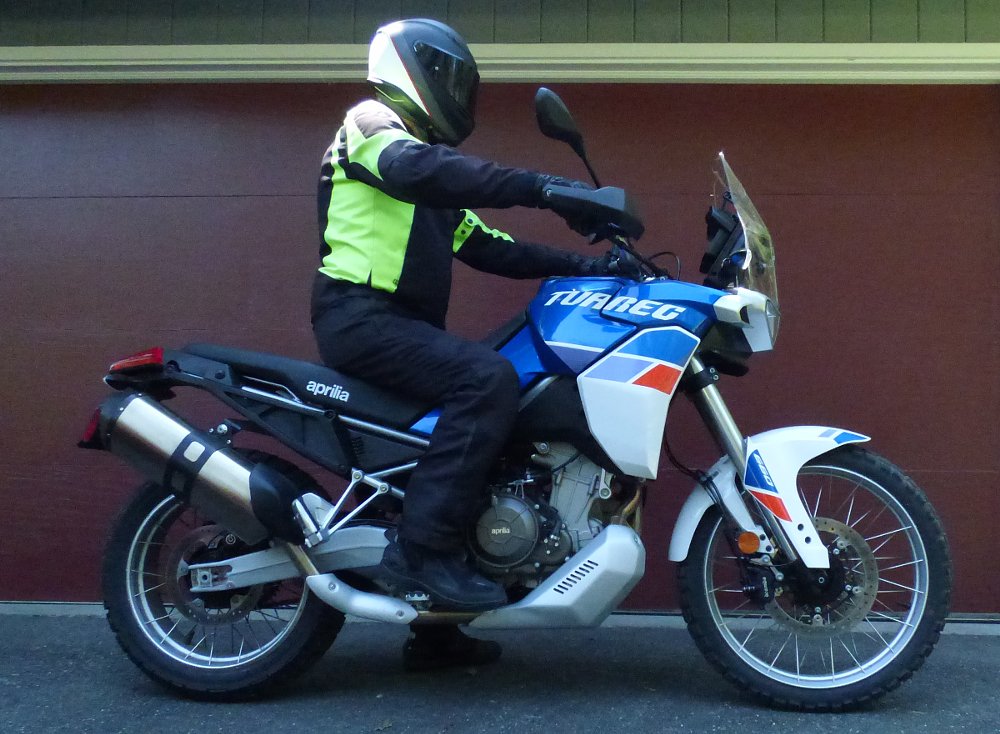
The other positive — and it's a huge one, the biggest one — for the sport-touring chops of the Tuareg will come as no surprise if you've read any previous reviews. That's the general, all-around goodness of its performance. After all, this is the bike that finished on top, absolute first place, in Zack's 2022 Daily Rider leaderboard.
The tune of the engine in the Tuareg makes it easy to surf the generous midrange, compared to its top-end-biased 660 siblings. It can't compare to the brute force of today's flagship adventure bikes, but it never felt underpowered and when I got to the good roads it was fun to wring it in a way I might be hesitant to do with the heavier, more expensive, 150-horsepower competition. Meanwhile, the Tuareg's ADV ergonomics put the rider perfectly in control and the wide, tall handlebar provides plenty of leverage that translates into quick handling. I not only rode some of the roads that fit the "sport" part of sport-touring, but I also took the Tuareg to a road track — that's another whole story — and the Tuareg was capable of all the performance that the Pirelli Scorpion Rally STR tires could provide, and that was a lot more than I expected in a track-day setting.
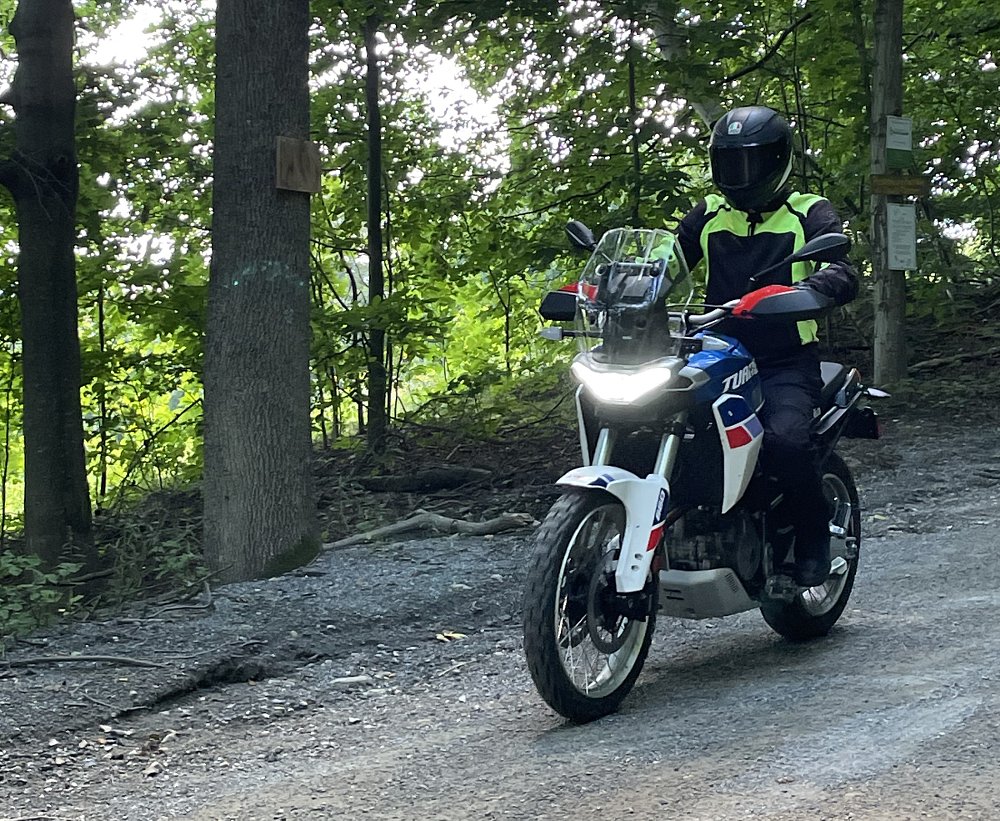
The first of this year, I moved to a new location, an area with a surprising number of unpaved roads. I've put off exploring some of those dirt lanes on my street motorcycles with street tires. On the Tuareg, I happily made up for lost time, exploring shady dirt tracks through forests that provided some of the most enjoyable quick rides I've had in my new home. And for the Tuareg, a dirt road is no challenge at all.
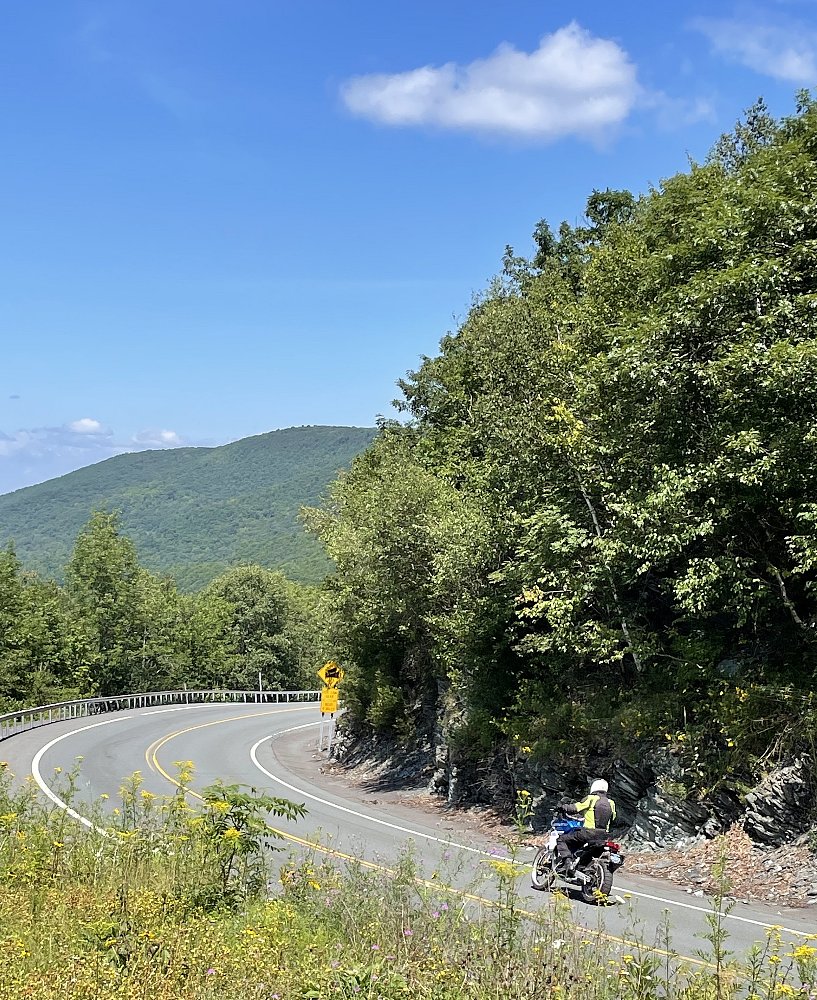
Well, actually... no. Realistically, I'm not going to do two 500-mile highway days to get to a destination where I'm going to do the kind of off-road riding the Tuareg is capable of doing. To have that capability that I'll never use, I have to, on a daily basis, throw my leg over the nearly 34-inch-high seat, which means I can just barely get the balls of both feet on the ground with my 32-inch inseam. Forget backing out of a parking spot with the slightest grade working against me. The seat and wind management comfort issues also mean those back-to-back 500-mile days would be less fun. Plus, I'm the kind of rider who would rather have three used bikes for different purposes than one shiny new motorcycle that purports to do it all. Instead of converting me to adventure-touring fandom, riding the Tuareg on my local dirt roads made me once again think hard about the desirability of having a 250-class dual-sport in the fleet, for plonking around at low cost and low stress.
But, wait! You didn't come here to read about whether the Tuareg was right for me. If you've read this far, you're probably wondering at least a little if the Tuareg is right for you. So I'm going to try to help you out with that.
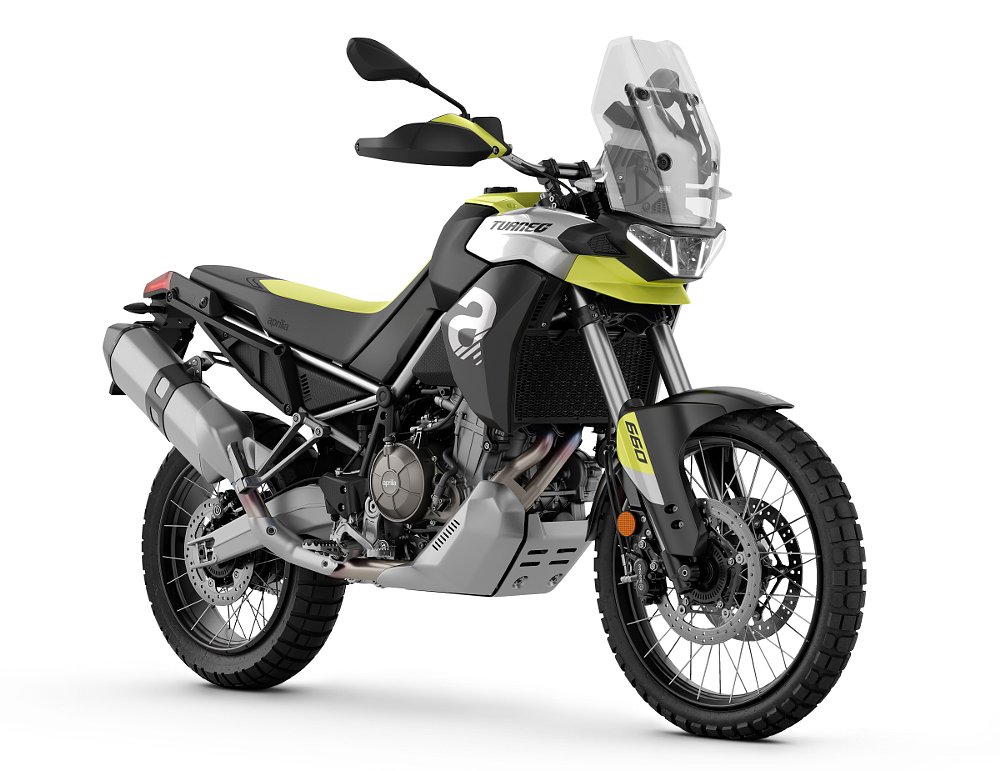
Take this quiz to see if you should buy a Tuareg
Just answer these 10 questions and add up your point totals. If the result is a positive number, you should probably consider a Tuareg. If you end up with a negative number, likely not. Go!
- It's genuinely likely you will take a multi-day vacation ride that involves something like a full day of highway riding, three days on a Backroad Discovery Route and squeezing in a few twisty paved roads. True: three points; false: minus one point.
- You won't actually take a trip like that, and realistically all your riding will be on pavement, but it's really important to you that your motorcycle project a whiff of adventure, as if you could take off for Kazakhstan at any moment. True: two points; false: minus two points.
- You'd rather have one very capable motorcycle that can do it all than have three or four more specialized bikes. True: two points; false: minus two points.
- Your inseam is 34 inches or greater. True: one point; false: minus one point.
- Your inseam is less than 32 inches but your friends are sick of hearing you say "Jocelin Snow is under five feet, two inches and that doesn't keep her from riding adventure bikes, so stop being a wimp!" True: two points; false: minus two points.
- You were interested in a Yamaha Ténéré but changed your mind after examining the spec sheet because you think that riding a motorcycle in the year 2023 without traction control, cruise control, and a TFT display is positively medeival, cost be damned. True: two points; false: minus two points.
- You find out there are fewer than a hundred Aprilia dealers in the United States, and none at all in most of the states, and your reaction is "We are hardy, resourceful adventure riders! We don't need no stinkin' dealer support!" True: one point; false: minus two points.
- You naturally want aluminum panniers on your adventure bike and when you look at Aprilia's website and see that the panniers and required mounts cost more than $2,000, your response is, "Sounds like a deal!" True: one point; false, minus two points.
- You're excited about the opportunity to explain to your riding buddies what "Indaco Tagelmust" means because you think it will make you sound impressive, not pretentious. True: two points; false: minus two points.
- You're already sold on the adventure-touring category, you don't need to own the biggest, the most popular, or the most race-ready, but are happy with all-around usable goodness and care more about how your bike works, not what image it projects. True: two points; false: minus two points.
If you're a multi-dimensional rider, the Aprilia Tuareg 660 is one of the most versatile and capable choices in the motorcycle market today. More capable off pavement than any street bike, more comfortable on the highway than any small dual-sport, more manageable and affordable everywhere than the big flagship adventure bikes, it's a genuinely good motorcycle. You don't finish atop Zack's Daily Rider leaderboard with any lesser effort. But even the best motorcycle is not for everyone. The Tuareg is wasted on me, for example. Your story may be different.
| 2022 Aprilia Tuareg 660 | |
|---|---|
| Price (2023 MSRP) | $12,299 base; $12,699 for Indaco Tagelmust version |
| Engine | 659 cc, liquid-cooled, eight-valve, parallel twin |
|
Transmission, final drive |
Six-speed, chain |
| Claimed horsepower | 80.0 horsepower @ 9,250 rpm |
| Claimed torque | 51.6 foot-pounds @ 6,500 rpm |
| Frame | Steel trellis |
| Front suspension | Kayaba 43 mm fork, fully adjustable; 9.45 inches of travel |
| Rear suspension | Kayaba shock, fully adjustable; 9.45 inches of travel |
| Front brake | Brembo two-piston calipers, dual 300 mm discs with ABS |
| Rear brake | Brembo one-piston caliper, 260 mm disc with ABS |
| Rake, trail | 26.7 degrees, 4.46 inches |
| Wheelbase | 60.04 inches |
| Seat height | 33.85 inches |
| Fuel capacity | 4.75 gallons |
| Tires | Pirelli Scorpion Rally STR, 90/90-21 front, 150/70R-18 rear |
| Measured weight | 456 pounds |
| Available | Now |
| Warranty | 24 months |
| More info | aprilia.com |

 Membership
Membership










